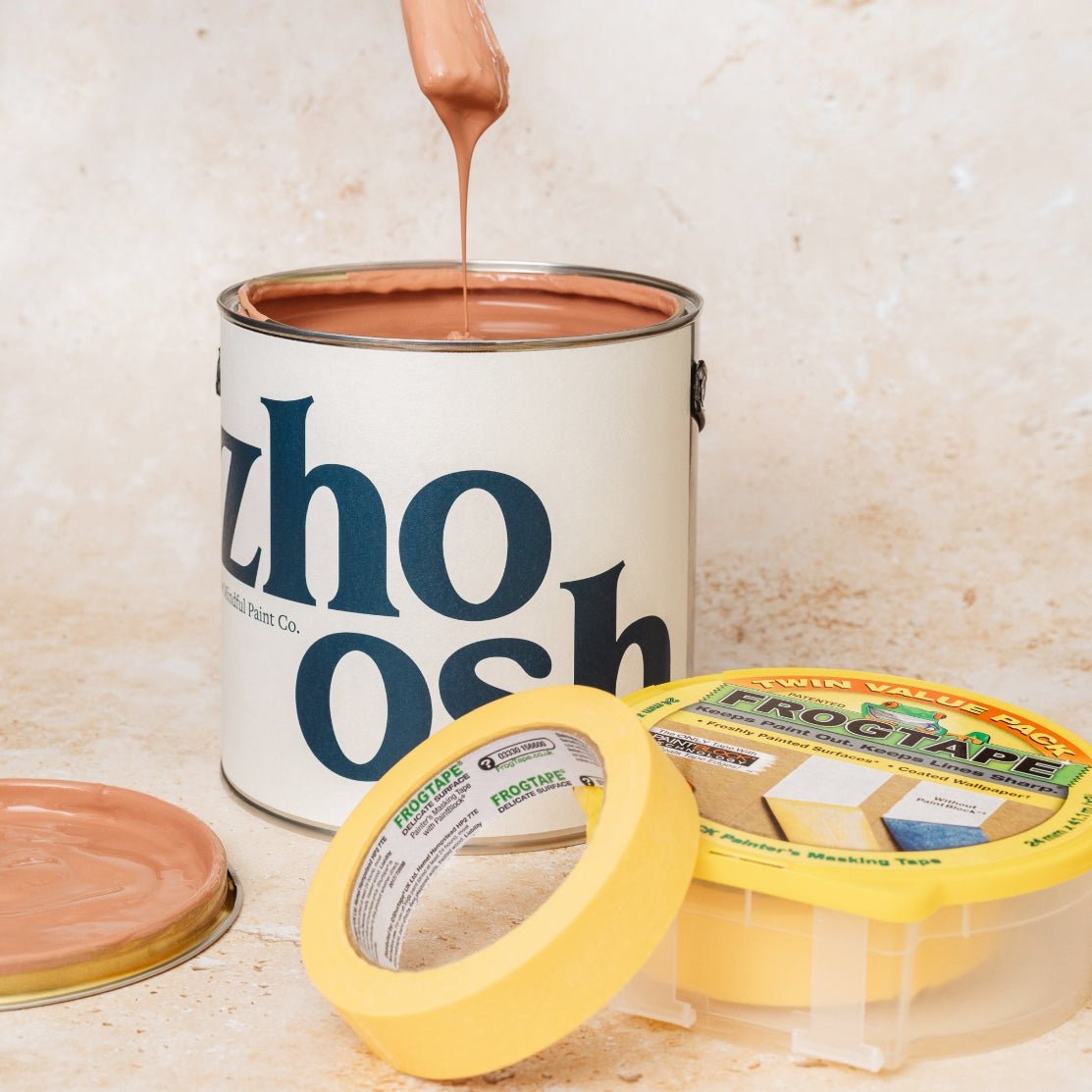How to fix peeling paint (and how to stop it happening again)
Peeling paint is one of the most frustrating interior paint problems. Whether it’s flaking off walls, woodwork or metal surfaces, it’s usually a sign that the surface wasn’t properly prepared – or that the wrong paint was used for the job.
In this guide, we’ll explain how to fix peeling paint, as well as how to stop paint from peeling in the first place. With a few simple steps and the right materials, your walls and surfaces can look smooth and refreshed again.
What causes paint to peel?
Understanding the cause of peeling paint helps you prevent it from happening again. Common reasons include:
Using the wrong type of paint for the surface
Walls, wood, and metal all react differently to paint. Using a wall paint on wood, for example, can cause poor adhesion and eventual peeling.
Poor surface preparation
Paint applied over dirt, grease, moisture, or flaking old layers will struggle to stick.
Moisture or humidity
Damp walls or steamy environments like bathrooms can cause bubbling and peeling if not properly sealed or ventilated.
Exposure to sunlight and heat
Direct sun or heat can break down paint over time, especially if inferior products are used.
Scuffing or abrasion
High-traffic areas or furniture rubbing against painted surfaces can cause premature wear and peeling.
How to stop paint from peeling
If you're wondering how to stop paint peeling before it starts, the answer is in proper prep and product choice. Follow these steps:
Choose the right paint for the surface
At Zhoosh, our paint comes in two specialist finishes:
- Walls and ceilings paint – for plaster and other porous surfaces
- Wood and metal paint – formulated to bond to harder, less absorbent materials like radiators, skirting boards, and doors
Using the correct paint type is essential. If you use wall paint on metal, it will likely peel away in weeks.
Prepare the surface properly
- Clean thoroughly to remove dirt, grease or dust
- Sand or scuff glossy surfaces to give the paint something to grip on to
- Apply primer to help seal and smooth the surface (especially important for previously painted areas, patched zones, or porous substrates)
How to fix peeling paint on walls
If you already have peeling paint, don’t worry – you can fix it. Here’s exactly how to repair paint peeling off walls or other interior surfaces:
Step-by-step: how to fix peeling paint
Scrape away flaking paint
Use a small scraper or utility knife to gently lift and remove loose paint. Don’t pull it off with your hands, as this can tear away more than needed.
Sand the edges smooth
Feather the edges of the peeled area using fine sandpaper so it blends seamlessly with the surrounding wall. This prevents “patches” showing through the top coat.
Clean the area
Wipe with a dry or slightly damp cloth to remove dust and debris. Make sure the surface is clean and completely dry before you begin painting.
Apply primer
Use a suitable primer to seal the area and help the new paint adhere properly. This is essential for preventing future peeling, especially if the area has been repaired or patched.
Repaint the area
Use a matching paint in the correct finish (e.g. wall paint or wood/metal paint depending on the surface). A brush or small roller both work well. Apply two thin coats, allowing at least an hour between coats to dry thoroughly.
Use a sealant (Bonus tip!)
Our paints are scuff-resistant and long-lasting, so additional sealants aren’t usually required. But in high-traffic or humid areas, a light sealant can add extra protection.
FAQs: Peeling Paint Problems
How do you stop paint from peeling on bathroom walls?
Use moisture-resistant primer and high-quality wall paint specifically formulated for humid environments. Always allow surfaces to fully dry before painting and ensure good ventilation.
Can I just paint over peeling paint?
No. Painting directly over peeling paint without scraping and sanding first will result in poor adhesion and more peeling later.
Will Zhoosh Paint stop peeling?
Absolutely – when used on the correct surface and applied as directed. Our high-performance paint is durable, low-VOC and scuff tested against leading brands.
The final word: paint that lasts
Whether you're repairing peeling paint or starting a new decorating project, the key to a long-lasting finish is simple:
- Use the right paint for the surface
- Prep thoroughly
- Apply with care
With Zhoosh Paints, every shade in our colour range is available in both wall/ceiling and wood/metal formulas – so you can match your tones perfectly and rest assured the finish will last.
Happy painting!


